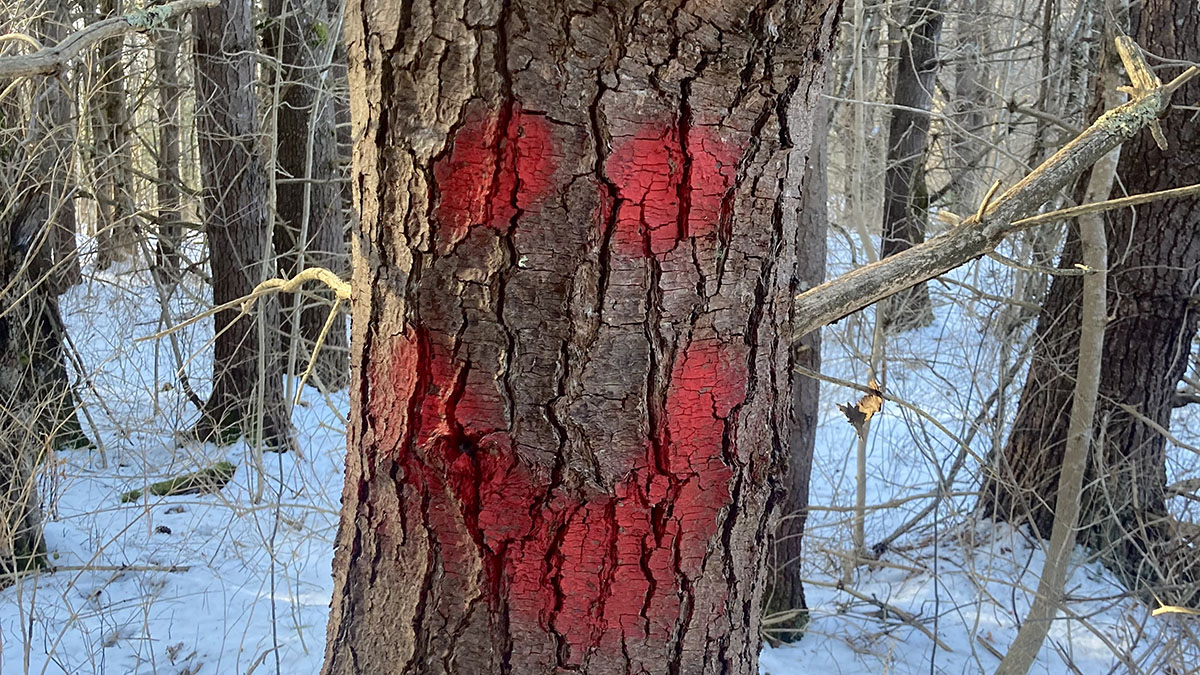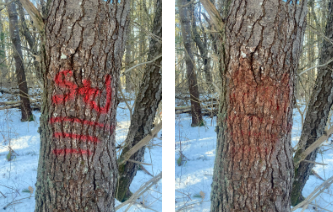
Merriam-Webster defines wilderness as an area essentially undisturbed by human activity together with its naturally developed life community. For those of us that enjoy recreating outdoors, that definition can vary depending on our intended use and interest. But there is one overarching theme that tends to be present when we are hiking, biking, or simply observing, and that’s being surrounded by the elements of nature. Whether we’re passing through a grassy field or hiking among stands of mixed forest, we all have a unique experience that helps our personal definition of wilderness ebb and flow with the time and places we choose to explore.
 As I’ve ventured out to Maine Audubon sanctuaries this winter, there have been several instances where I was taken aback by their beauty and left in awe of the abundance of wildlife around me. Unfortunately, there have also been a few jarring moments that shifted my mindset from the whimsical woods back to reality—the reality being that people undoubtedly have an impact on wild spaces.
As I’ve ventured out to Maine Audubon sanctuaries this winter, there have been several instances where I was taken aback by their beauty and left in awe of the abundance of wildlife around me. Unfortunately, there have also been a few jarring moments that shifted my mindset from the whimsical woods back to reality—the reality being that people undoubtedly have an impact on wild spaces.
Several trees throughout Maine Audubon sanctuaries have been feeling the brunt of human impact in the form of tagging and carving. It’s likely that visitors who add a personal touch to a tree are simply trying to leave a piece of themselves behind, but as outdoor enthusiasts we must fully understand the ramifications of our actions.
Marking trees is not art. Tagging on bark exposes trees to harsh chemicals and once dry, seals off their pores. Spray paint can cause toxicity in certain tree species and when the pores found within bark become clogged, a tree’s natural exchange of gasses is impeded. This results in direct harm to the tree and its surrounding environment.
Carving trees creates an opening for bacteria and pests to find a way into a tree’s system. Infection can occur, which inevitably shortens the tree’s life.
Maine Audubon’s Properties Department has been working to remove tagging from trees, and urges visitors to follow the seven principles of Leave No Trace. If you’re out exploring a Maine Audubon sanctuary and see spray paint, please report your findings to the Land Steward by emailing lthibault@maineaudubon.org. The process of removing tagging doesn’t eliminate the trauma from a tree, but it can help to re-open pores and restore a more natural aesthetic to the area for future hikers.
